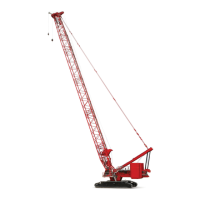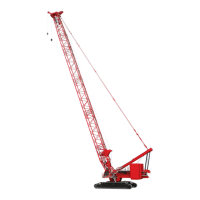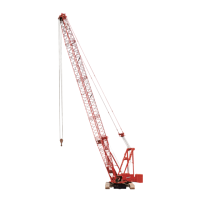Manitowoc Published 11-20-19, Control # 234-19 3-63
MLC300 OPERATOR MANUAL OPERATING CONTROLS AND PROCEDURES
PREPARING CRANE FOR OPERATION
STARTUP PROCEDURE
Read and understand the starting instructions in the engine
manufacturer’s operation and maintenance manual provided
with this crane.
1. If used, unplug or turn off the engine block heater,
engine oil pan heater, hydraulic tank heaters, and any
other crane heaters.
NOTE Manitowoc recommends the use of the Cold
Weather Package to aid startup when the ambient
temperature will be 0°C (32°F) and below.
WARNING
Read Capacity Charts
Do not attempt to operate the crane without first reading
and understanding the capacity charts located in the
Capacity Chart Manual provided with the crane.
The crane must be rigged and operated according to the
instructions given in the capacity charts, in Section 4 of
the MLC300 Operator Manual, and in Section 4 of the
MLC300 Luffing Jib Manual.
Unless otherwise specified in the capacity charts, all
crane operations must be performed with the crane level
to within one 1% of grade in all directions — 0,3 m in 30 m
(1 ft in 100 ft); otherwise, crane could tip.
Do not operate the crane—including raising the boom
from ground level—if the wind speed exceeds the limits
given in the capacity charts. Contact your local weather
station for the wind velocity in your area.
Failing to comply with the requirements of the capacity
charts can result in tipping or structural failure of the boom
or luffing jib.
Equipment Failure Hazard
At low ambient temperatures, dynamic loads (impact and
shock) can affect the steels used in Manitowoc cranes
when operating in cold weather. Read and comply with
Cold Weather Operation on page 3-85
before operating
the crane.
Moving Load Hazard
The operator shall select the proper crane capacity chart
in the RCL/RCI Display before operating.
Unexpected drum motion or improper limit responses can
result if the wrong capacity chart is selected.
The limit bypass switch shall be in the enable position (on)
and all the limits with which the crane is equipped shall be
operational before operating the crane.
Avoid Injuring Personnel in Operating Area
Sound the horn to alert personnel that operation is about
to begin.
CAUTION
Machinery Damage Hazard
Before operating the crane at the start of each shift:
• Perform the preventative maintenance checks and
lubrication requirements listed in Sections 5 and 6 of
the MLC300 Operator Manual.
• Inspect the VPC trolley rails for damage and make
sure the roller paths are clean and free of all debris.
• Adjust the operator’s seat. See Seat Riser Control on
page 3-14 and Seat Controls on page 3-28.
• Adjust the cab door if needed. See Cab Door
Adjustment on page 3-57.
• Store the folding ladder. See Ladder Installation
(Past) on page 3-59.
• Make sure cab tilt stop pins are lowered and pinned in
working position. See Cab Tilt Stop Pins Installation
on page 3-57.
WARNING
Moving Machinery Hazard
To avoid injuring personnel or damaging the crane and
property:
• Do not start the engine if an out-of-order sign or do
not operate tag is present at the start controls.
• Check that all controls are off so the crane and load
do not move when the engine is started.
• Check that all personnel are clear of the crane before
starting the engine. Sound horn to alert personnel.
Engine Explosion Hazard
Do not use starting fluids with this crane’s engine. The
engine is equipped with an air intake heater. Use of
starting fluid can cause an explosion, fire, personal injury,
severe damage to the engine and damage to property.
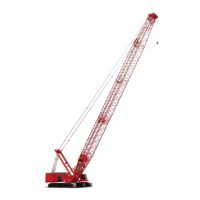
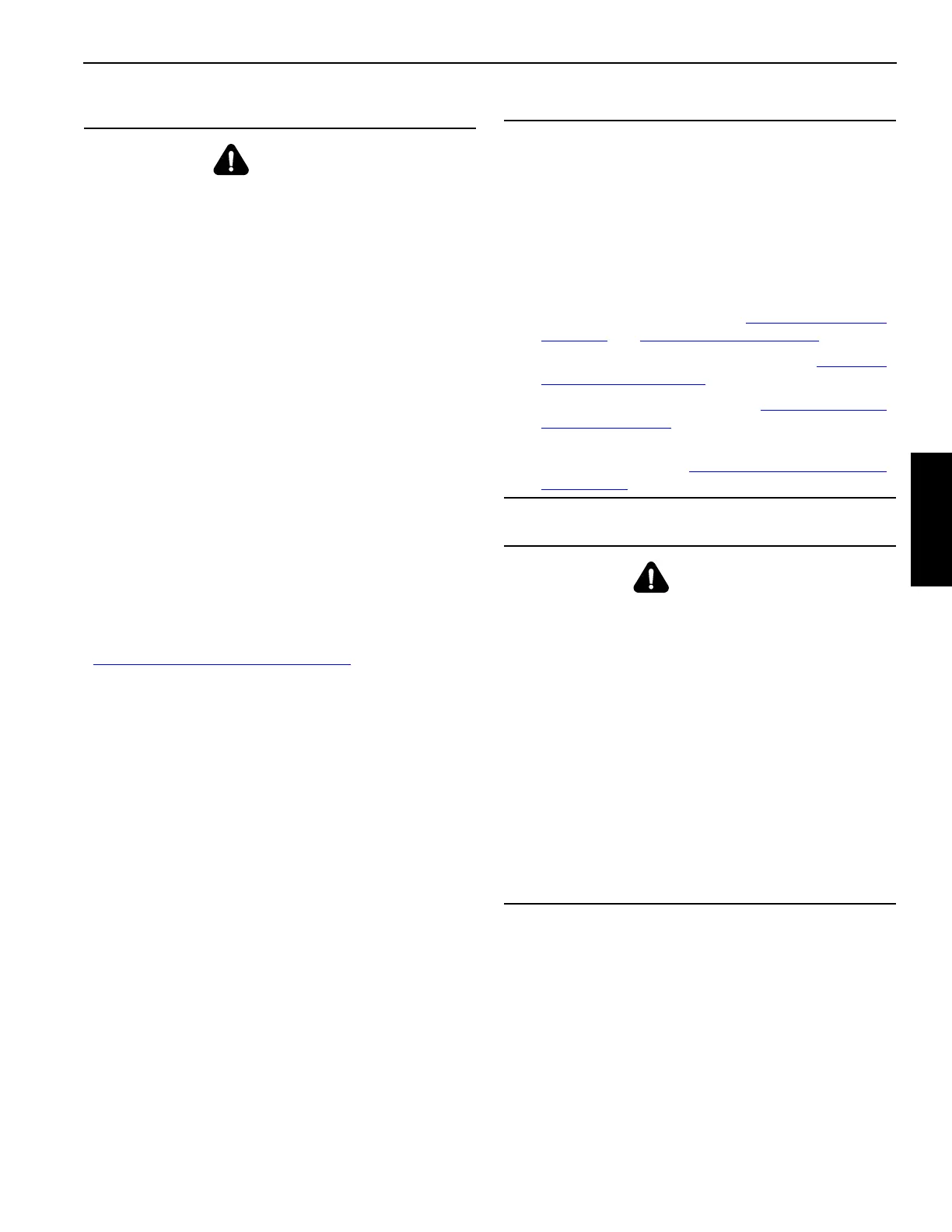